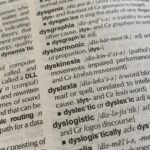Click here for Part 1 in case you missed it
How the Barton System Aligns with Different Learning Styles
One of the greatest strengths of the Barton System is its ability to adapt to different learning styles. Every child learns differently, and the Barton System’s multi-sensory approach allows it to meet the needs of a wide range of learners.
Visual Learners
Visual learners process information best when it is presented visually, through images, diagrams, or written text. The Barton System supports visual learners by incorporating visual elements into every lesson. For example, students might use colored tiles to represent different sounds in a word or watch as their tutor writes out words on a whiteboard. These visual cues help reinforce learning and make abstract concepts more concrete.
Auditory Learners
Auditory learners learn best through listening and speaking. The Barton System supports auditory learners by incorporating plenty of listening and speaking activities into each lesson. Students might listen to their tutor pronounce a word, then repeat the word themselves, breaking it down into individual sounds as they go. This auditory practice helps reinforce the connection between sounds and letters, making it easier for students to read and spell.
Kinesthetic Learners
Kinesthetic learners learn best through movement and touch. The Barton System supports kinesthetic learners by incorporating hands-on activities into each lesson. For example, students might trace letters or words with their finger, use manipulatives to build words, or engage in activities that involve physical movement. These kinesthetic activities help students internalize what they are learning, making it easier for them to remember and apply it later.
Combination Learners
Many students are combination learners, meaning they learn best when they can engage multiple senses at once. The Barton System’s multi-sensory approach makes it ideal for combination learners, as it provides opportunities for students to see, hear, and touch the material they are learning. This multi-sensory input helps reinforce learning and makes it easier for students to retain information.
Success Stories and Evidence-Based Results
The effectiveness of the Barton System is backed by both anecdotal evidence and research studies. Many parents and educators have seen significant improvements in their students’ reading and spelling abilities after using the Barton System.
For example, one parent might share the story of their child who struggled with reading for years before starting the Barton System. After just a few months of one-on-one tutoring, the child’s reading skills improved dramatically, and they were able to read at grade level for the first time. Stories like this are common among students who use the Barton System, highlighting its ability to transform learning for students with Dyslexia and other learning disabilities.
In addition to these personal stories, research studies have also shown the effectiveness of the Barton System. Studies have found that students who use the Barton System show significant improvements in reading fluency, comprehension, and spelling skills. These improvements are not just short-term; many students continue to see benefits from the Barton System long after they have completed the program.
Practical Tips for Parents
If you’re considering the Barton System for your child, here are a few practical tips to help you get started:
- Assess Your Child’s Needs: Before beginning the Barton System, it’s important to assess your child’s specific learning needs. This might involve a formal evaluation by a specialist or simply observing your child’s strengths and weaknesses in reading and spelling.
- Find a Qualified Tutor: The Barton System is most effective when used by a qualified tutor who has been trained in the program. Look for a tutor who has experience working with students with ADHD and Dyslexia and who can provide the individualized attention your child needs.
- Be Patient and Supportive: Learning with the Barton System is a process that takes time and patience. Be supportive of your child’s efforts and celebrate their progress, no matter how small.
- Stay Involved: Stay involved in your child’s learning by communicating regularly with their tutor and practicing the skills they are learning at home. Your involvement can make a big difference in your child’s success.
Conclusion
The Barton System of Reading and Spelling is a powerful tool for helping students with ADHD and Dyslexia overcome their learning challenges. By using a structured, multi-sensory approach, the Barton System provides the individualized support that these students need to succeed. Whether your child is struggling with reading, spelling, or both, the Barton System can help them build the skills they need to thrive academically and beyond.
If you’re interested in learning more about the Barton System or would like to schedule an assessment for your child, don’t hesitate to reach out to us! Click here. With the right support, your child can achieve their full potential and develop a lifelong love of learning.
Go to Part One of Understanding the Barton System: How It Can Transform Your Child’s Learning Experience





